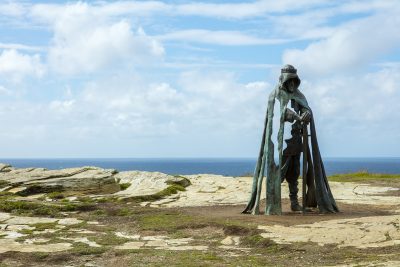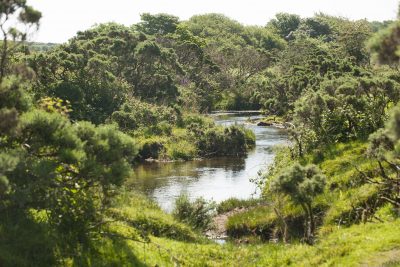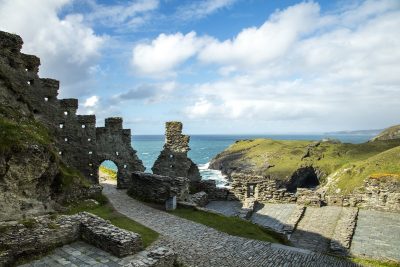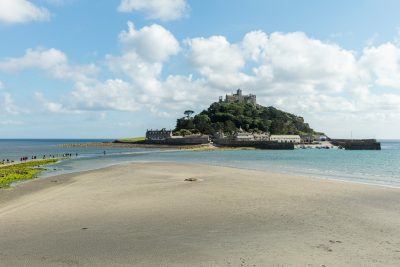King Arthur’s Kingdom
King Arthur and his Knights of the Round Table are closely associated with Cornwall in several legends.
Explore his kingdom and find out the truth behind the stories.
An Arthurian Tale?
Allegedly conceived at Tintagel Castle on Cornwall’s rugged north coast, was Arthur a real 5th or 6th century brave and fearless Celtic warrior, defending his land from invading Saxons, or are the stories of Arthur, Merlin, Guinevere and Lancelot all a magical myth?
Certainly there are specific areas of Cornwall that fit with the legends. Ancient iron spearheads, armour and bridles have been dug up around the Camel River, Arthur’s supposed battleground. Medieval inscriptions have been found on windowsills at Tintagel Castle and for centuries historians have debated whether Camelford was the site of Camelot, Arthur’s legendary court.

Tintagel
Half on the mainland, half on the headland with waves crashing below, the ruins of Tintagel Castle date from the 13th Century when Richard 1st Earl of Cornwall built a castle. Excavations have revealed a much earlier settlement existed and it was here the medieval scholar, Geoffrey of Monmouth places Arthur in his now discredited history chronicles, the Historia Regum Britanniae.
However, in medieval times, very few people would have written down stories and when they did the sources would mostly have been stories passed down through the ages in oral tradition. For many centuries Geoffrey of Monmouth’s accounts were taken seriously.
Geoffrey of Monmouth’s work written around 1136, describes the stories of Merlin, Guinevere and Mordred, although Lancelot is left out.
St Nectan’s Glen
This is where Arthur was allegedly blessed before embarking on his quest for the Holy Grail. Its Cornish name is Glynn Nathan, meaning deep wooded valley of Nathan/Nectan.

Bodmin Moor

Tintagel
Camelot
Historians have variously placed Arthur’s kingdom, Camelot, as being either at Tintagel or in Camelford. Castle Killibury, nearby in Wadebridge is also mentioned as being where he held court.
Near to Camelford, a 6th century stone is marked at Slaughter Bridge to signify where Arthur’s final battle with Mordred took place. The battle of Camlann is said to have been where Arthur killed his disloyal nephew and where he received his fatal wound. It also bought an end to The Knights of the Round Table.
Dozmary Pool
This is the location of the Excalibur legend. Arthur is supposed to have been given the magical sword by the Lady of the Lake, and it is to her he asks Sir Bedivere to return it to after receiving his mortal wound at Slaughter Bridge.
Other places associated with King Arthur
- Arthur’s Bed – a strange man-shaped stone near Trewortha Tor, Bodmin.
- King Arthur’s Hall – an enclosure surrounded by ancient stones near St Breward, Bodmin.
- Bossiney Mound – allegedly The Round Table appears here on Midsummer’s Eve.
- Castle Dore, Fowey – King Mark of Cornwall’s stronghold. The ‘Tristan Stone’ was located near here and has been identified as possibly marking the grave of his nephew, Tristan, a Knight of the Round Table.
- Roche Rock – Ogrin, the hermit, is said to have lived here. He counselled Tristan and Isolde against King Mark’s fury.
- Lyonesse – a sunken kingdom somewhere between Land’s End and the Isles of Scilly. Some have this as where Arthur fought Mordred, some as where Arthur was taken after his death.
- St Michael’s Mount – another location for Lyonesse.

St Michael’s Mount






